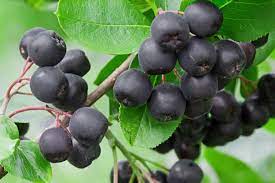Last Updated on August 16, 2023 by Real Men Sow
Black chokeberry (Aronia melanocarpa), is a deciduous tree, which is found in the eastern half of North America. It has an upright, rounded growth habit. The glossy, dark green leaves are approximately 1 to 3 inches in length and can be either lanceolate (or elliptical) in shape. In the fall, the foliage changes from reddish-purple to reddish purple.
This adds a striking color to the landscape and then the plant is removed for the winter. In spring, clusters of five-petaled flowers emerge. Then in late summer and fall, the fruits turn to black. Black chokeberry can be planted in spring or fall at a slow or moderate rate of growth.
Propagating Black Chokeberry (Aronia melanocarpa)
Softwood cuttings are the best and most efficient way to propagate chokeberry. These should be taken mid-to late in the summer. This is the best way to propagate a cultivar, and to get plants that are faithful to the parent.
- You should cut a branch so you have at least two to four internodes. These are the points where a branch or leaf emerges. All bottom leaves, except the top two, must be removed.
- Dip the cut end into rooting hormone.
- Place the cutting in a 4-inch pot and fill it with moistened potting mixture.
- You can place the pot outside in partial shade. Keep it watered well until new growth appears. You can either transplant the pot in garden soil or allow it to grow further and plant it in autumn.
Growing Black Chokeberry (Aronia melanocarpa) From Seed
It is difficult to propagate chokeberry seeds from seed because the tiny seeds require several months of cold stratification. A cultivar’s seeds won’t produce the same plant as a seed from another variety. These seeds are messy and difficult to extract from the berries. It is not recommended to propagate black chokeberry seeds.
General Care Guide for Black Chokeberry (Aronia melanocarpa)
Light
A black chokeberry shrub can be planted in full sun or partial shadow. You will have the best results with full sunlight. This means at least six hours of direct sun on most days. The shrub will not flower or fruit if it is too shaded. It will also produce weak growth, which could eventually lead to its death.
Soil
This shrub’s adaptability to different soils is a virtue. Although it can tolerate clay and sandy soils, it prefers to grow in a mixture of both. It can also tolerate salt in the soil making it an excellent choice for sites near roads that use road salt.
Water
Black chokeberry is a moderately water-dependent fruit. It can withstand both drought and flooding. It is best to water your shrub during dry spells or particularly hot weather.
Temperature and Humidity
The tolerance of black chokeberry to both cold and high temperatures is excellent. It blooms late in spring, so it avoids frost. The shrub is fine with humidity as long as there’s good air circulation.
Fertilizer
If you have poor soil, black chokeberry won’t require any additional fertilization. To give your shrub a boost, you can add compost to the soil before planting it. For healthy growth, add a layer of compost to the soil each spring.
Pruning
Lightly prune the stems after the plant has finished flowering in spring to form the shrub to your satisfaction. As soon as you notice them, take out any diseased, dead or damaged parts of the shrub.
Overwintering
Black chokeberry, a native tree, is well-adapted to winters within its range of growth. Late frosts can cause damage to the flowers and reduce fruiting in subsequent years. To protect your shrub from frost, cover it with a sheet if you live in an area that experiences frost.


